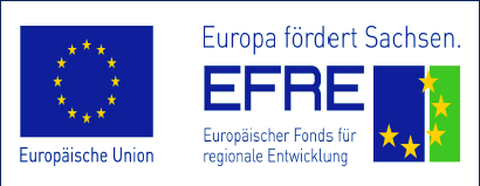Multi enzyme systems involved in astin biosynthesis and their use in heterologous astin production (MESIAB)
Astins are cyclic peptides isolated from the roots of the plant Aster tataricus and root extracts show antibacterial activity. Astin derivatives possess also a high anti-tumour potential. Since only very low amounts of astins can be isolated from plants and they are difficult to synthesise chemically without negative impacts on the environment. Therefore, this project aims at enhancing the production of astins using molecular genetic tools. Thus we will detect and clone the genes required for astin biosynthesis. To allow the detection of these genes, bioinformatic tools and sequence information from microbial nonribosomal peptide synthetases will be used to develop primers for peptide synthetases specific for the amino acids found in astins. Specific primers will also be constructed for the prolyl dehydrogenase and halogenase(s) catalysing the halogenation of prolyl residues. After detection, the genes will be cloned, sequenced and expressed in heterologous hosts such as bacteria or yeast. Alternatively, cell or organ cultures of aster can be used for homologous expression. After cloning and successful expression of the individual genes in heterologous hosts, the activity of the resulting nonribosomal peptide synthetases will be analysed using assays established in the groups working on this part of the project. Analogously, the gene(s) for the halogenase(s) and prolyl dehydrogenase will be expressed and analysed for activity. The genes of the individual enzymes will be combined in a “gene cluster” and will be introduced into heterologous host for over-expression. Over-expression of the astin biosynthetic “gene cluster” should result in enhanced production of astins. To allow the biotechnological production of astins, Streptomyces strains or alternatively plant cells will be used and a fermentation process will be developed by changing various fermentation parameters. With larger quantities of astins available, screening using DNA arrays can be performed to analyse the influence of astins on gene expression. Special attention will be given to oncogenes and “vital” genes. The study of the genes highlighted by this method and their implication in the biological functions can bring new perspectives for the development of new pharmacological or cosmetical applications of astins.
Publications:
- Schafhauser, T., Wibberg, D., Rückert, C., Winkler, A., Flor, L., van Pée, K.-H., Fewer, D.P., Sivonen, K., Jahn, L., Ludwig-Müller, J., Caradec, T., Jacques, P., Huijbers, M.M.E., van Berkel, W.J.H., Weber, T., Wohlleben, W., Kalinowski, J. (2015) Draft genome sequence of Talaromyces islandicus ("Penicillium islandicum") WF-38-12, a neglected mold with significant biotechnological potential. J. Biotechnol. 211: 101-102
- Schafhauser, T., Kirchner, N., Kulik, A., Hujbers, M.M.E., Flor, L., Caradec, T., Fewer, D.P., Gross, H., Jacques, P., Jahn, L., Jokela, J., Leclère, V., Ludwig-Müller, J., Sivonen, K., van Berkel, W.J.H., Weber, T., Wohlleben, W., van Pée, K.-H. (2016) The cyclochlorotine mycotoxin is produced by the nonribosomal peptide synthetase CctN in Talaromyces islandicus ('Penicillium islandicum'). Environmental Microbiol. 18: 3728-3741
- Jahn, L., Schafhauser, T., Pan, S., Weber, T., Wohlleben, W., Flor, L., van Pée, K.-H., Caradec, T., Jacques, P., Hujbers, M., van Berkel, W., Fewer, D., Sivonen, K., Ludwig-Müller, J. (2017) Cyanodermella asteris sp nov (Ostropales) from the inflorescence axis of Aster tataricus. Mycotaxon 132:107-123
- Jahn, L., Schafhauser, T., Wibberg, D., Rückert, C., Winkler, A., Kulik, A., Weber, T., Flor, L., van Pée, K.-H., Kalinowski, J., Ludwig-Müller, J., Wohlleben, W. (2017) Linking secondary metabolites to biosynthesis genes in the fungal endophyte Cyanodermella asteris: The anti-cancer bisanthraquinone skyrin. Journal of Biotechnology 257: 233-239
funded by:


